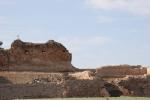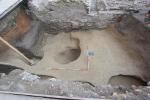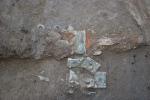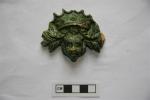Summary (English)
Archaeological excavations at the Palace of the Dukes of Ilok in Ilok have been systematically carried out since 2001. In the period from April 18 to October 13, 2006, the Institute of Archeology conducted the sixth season of archaeological and conservation works. The aim of the archaeological excavation was the restoration and revitalization of the archaeological and architectural complex of the Upper Town in Ilok, which is being conducted as a part of the “Exploration, restoration and revitalization of cultural heritage Ilok – Vukovar – Vucedol” project funded by the Government of the Republic of Croatia and the Council of Europe Development Bank. In 2006, exploration focused on defining the northern Gothic palace, the central courtyard, and the northwest corner with ramparts and towers. Numerous structures and features from the first quarter of the 18th century to the end of the 19th century have been recorded testifying to Baroque reconstructions carried out by members of the Odescalchi family over two centuries. Numerous pottery fragments and finds of coins testifying to life within the damaged Gothic palace can be correlated with the domination of the Ottomans, which lasted about a century and a half. Structures found in the central part of the northern half of the courtyard may belong to the remains of Ottoman architecture. The northern wing of the Palace of the Dukes of Ilok, built by Nikola Iločki in the middle of the 15th century, has been completely defined. It consisted of four rooms with plaster and brick floors. Under these later structures, late medieval, Roman-period and prehistoric layers were discovered, which testify to the continuous habitation of the Ilok Upper Town. Remains of Roman-period architecture and five early-imperial graves have been found. In the graves, numerous fragments of domestic and imported pottery, glass and bronze objects were found. Grave 5 with a sword in its scabbard and Roman military belt (cingulum militare) and tombstone 3 with a bronze scabbard stand out. Traces of continuous prehistoric habitation can be dated from the Late Stone Age to the Late Iron Age. The most intensively inhabited settlement, to which the largest number of excavated pits can be attributed, is recorded in the early phase of the Early Iron Age when the settlement of Kalakača phase of the Bosut group was located at the position (Željko Tomičić, Marko Dizdar 2007, Hrvatski arheološki godišnjak 3/2006, 38–41).
- Željko Tomičić - Institut za arheologiju
- Marko Dizdar - Institut za arheologiju
Director
- Željko Tomičić - Institut za arheologiju
Team
Research Body
- Institut za arheologiju - Institut za arheologiju
Funding Body
- projekt Vlade Republike Hrvatske i Razvojne banke Vijeća Europe: "Istraživanje, obnova i revitalizacija kulturne baštine Ilok – Vukovar – Vučedol" - Projekt Vlade Republike Hrvatske i Razvojne banke Vijeća Europe: "Istraživanje, obnova i revitalizacija kulturne baštine Ilok – Vukovar – Vučedol"





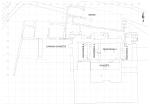
![Download [PDF]](/excavation/skins/fasti/images/results/download_sml.png)
